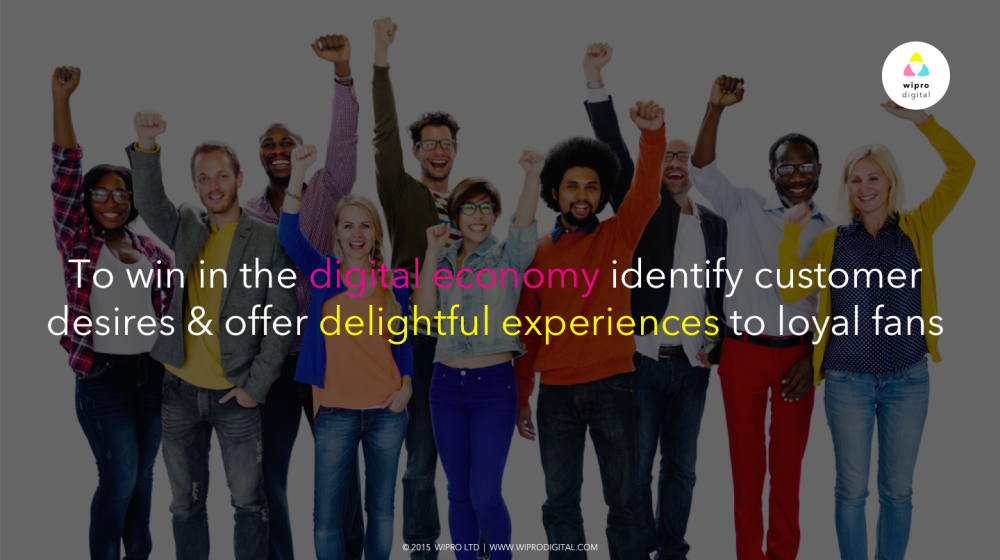Surviving and Thriving in a Digital Economy
28 Jul 2015

by Adam Vazquez
Digital Strategist, Wipro Digital
@AdamVazquez
A few close friends and I had just wrapped up a perfect hiking weekend in the White Mountains of New Hampshire and were looking forward to getting back home refreshed and ready to return to work. Little did we know that thunderclouds of terrible customer service were about to rain on our parade. I won’t bore you with the specifics of our encounter with a certain rental car company, but this horrific customer experience led me to ponder: “how do huge professional organizations get away with horrendous customer service in today’s digital economy?”
Apparently, I’m not the only one wondering. In his post for Forbes.com, Roger Dooley asked, “When customers can rapidly share their bad experiences, why do some companies survive, and even thrive, in spite of their poor service?” Dooley goes on to pinpoint monopolistic industries as primary culprits for bad service. How long, then, will these industries be able to thrive while treating their best customers poorly? Recent history would have us believe that change is imminent.

It has been well documented that the customer is now in charge of the transactional relationship formerly controlled by organizations. Customers now dictate time, place, and even the price of a transaction while being able to share their thoughts and emotions throughout its lifecycle. Moreover, innovation and technology are moving the power of the customer voice beyond this limited transactional relationship and allowing it to decide which organizations do business in the first place.
In the past, customers would watch from the sidelines as capitalist giants fought on the turf of business and politics to determine who would earn the right to compete in the marketplace. Now, companies that provide deep and meaningful experiences to their customers are essentially recruiting a grassroots army to fight for them in the marketplace.
One example is the groundswell of support generated in favor of Uber. By taking an extreme approach to customer satisfaction, Uber has flipped an entire industry upside down, altered policy, and grown a fiercely loyal customer base.
And Uber customers aren’t the only ones transitioning their loyalty from monopolistic organizations to customer-driven ones. Companies like Honor, TaskRabbit, Seamless, Shyp, Instacart and many others are proving that building a business with customers as the corner stone can deliver a knockout blow to formerly dominant incumbents.
Large organizations must be honest with themselves and evaluate whether the customer is truly the center of their focus. Only then can they cultivate the same excitement and loyalty found in the startups mentioned earlier. Doing so requires evaluating various customer experiences with a customer-focused lens and allowing the customer’s needs, wants, and desires to drive innovation, change, and service excellence within their organizations.
Because digital offers unprecedented, untethered, and unlimited access to information, it demands a different and a better way for organizations to identify customer desires and offer thoroughly delightful experiences to loyal fan bases. Customers in today’s digital economy won’t have it any other way.
Originally posted via Wipro Digital






Please login to comment.
Comments